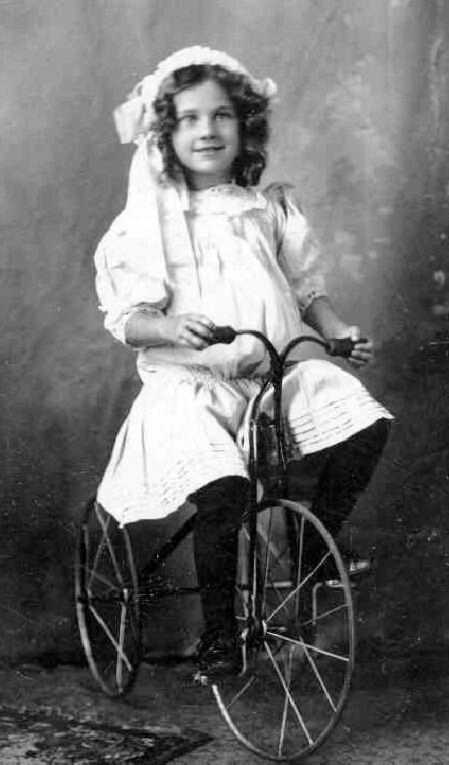
Tricycles: Gender Connotations

Figure 1.--This postcard looks like a girl riding a tricycle. HBC would date it about 1910. Before the turn of the century, portraits of girls on tikes are not common. In the 1910s it begins to become a little more coimmon. The postcard is from Bill Jones to another Bill enquiring if Bill is going to return his knife and picture. Some the words are mis-spelled and there are incomplete sentences. The message could have been written by a child (by
Bill?). Along the edge of the card is written "Good boy". Given the 1910 date and the little hat, this child is certainly a girl.
|
HBC notes that almost all early photographs of tricycles show boys riding them. This is especially true in the 19th century and still is still generally true for the early 20th century before World War I (1914-18). This is of special interest because it is often difficult to identify gender in early photographs. Many younger boys were often dressed in skirted garments and thus gender is frequently difficult to establish. Thus this can bre used to help identify the children. It is not, however, a foolproof indicator as we have noted a few portraits of children who are clearly girls riding tricycles. Girls riding tricycles do not begin to become common until the 1920s. This is just an initial assessment, but based on observations of a substantial number of available photographs.
Christopher Wagner

Navigate the Boys' Historical Clothing Web Site:
[Return to the Main trike page]
[Introduction]
[Activities]
[Biographies]
[Chronology]
[Clothing styles]
[Countries]
[Bibliographies]
[Contributions]
[Essays]
[FAQs]
[Glossaries]
[Satellites]
[Tools]
[Boys' Clothing Home]
Navigate the Boys' Historical Clothing Web Site:
[Sailor suits]
[Sailor hats]
[Buster Brown suits]
[Eton suits]
[Rompers]
[Tunics]
[Smocks]
[Pinafores]
Created: March 10, 2002
Last updated: March 10, 2002



